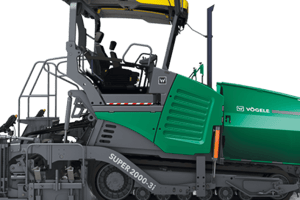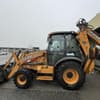Podcast
Questions and Answers
Which work activity involves the handling and storage of potentially hazardous materials?
Which work activity involves the handling and storage of potentially hazardous materials?
- Flammable Liquid Transport, Handling and Storage (correct)
- Painting Work
- Air Conditioning Installation
- Tiling Works
What type of operation would require the knowledge of high tension cables?
What type of operation would require the knowledge of high tension cables?
- Installation of suspended Ceiling
- High Tension (HT) Cable Laying Works (correct)
- Air Conditioning Servicing
- Computer Work And General Office Work
Which activity requires the use of a specialized machine for installation?
Which activity requires the use of a specialized machine for installation?
- Changing bulb
- CNC Operation (correct)
- General Housekeeping
- Use of Microwave
Which task is associated with maintaining cleanliness in a work environment?
Which task is associated with maintaining cleanliness in a work environment?
Which non-routine activity involves testing for safety and quality assurance in construction?
Which non-routine activity involves testing for safety and quality assurance in construction?
What type of activity involves the installation and operation of cranes?
What type of activity involves the installation and operation of cranes?
Which of the following tasks is classified as a routine activity in construction?
Which of the following tasks is classified as a routine activity in construction?
What type of construction task is involved in NR20?
What type of construction task is involved in NR20?
Which non-routine activity requires special precautions due to potential hazardous materials?
Which non-routine activity requires special precautions due to potential hazardous materials?
Which of these activities is associated with lifting equipment in routine operations?
Which of these activities is associated with lifting equipment in routine operations?
Which routine activity involves preparing the construction site before major work begins?
Which routine activity involves preparing the construction site before major work begins?
Which of the following activities is part of non-routine work associated with heavy machinery?
Which of the following activities is part of non-routine work associated with heavy machinery?
What does NR1 specifically refer to in construction activities?
What does NR1 specifically refer to in construction activities?
Flashcards are hidden until you start studying
Study Notes
Non-Routine Activities (HIRARC)
- NR1: Work conducted below or near high-tension cables requires strict safety measures due to electric shock hazards.
- NR2: Horizontal directional drilling involves drilling at an angle which minimizes surface disruption and is often used for utility installation.
- NR3: The proper use of fire extinguishers is critical to ensure swift response and minimize fire risks on site.
- NR4: Table form work (Erection, Jacking, Moving & Dismantling) necessitates careful planning and execution to ensure structural stability.
- NR5: Rekazulin formwork is used specifically for column construction, which supports vertical loads during the building process.
- NR6: Tower crane installation and operation are essential for high-rise construction, requiring operator certification due to complexity.
- NR7: Erection and dismantling of tableforms (e.g., EFCO) involve cyclical processes for concrete pouring and requires skilled labor.
- NR8: Sagging slab jacking techniques are utilized to correct structural defects in concrete slabs.
- NR9: Building demolition work mandates adherence to safety protocols to prevent accidents and environmental hazards.
- NR10: Demolition of parapet walls requires careful assessment of structural integrity to ensure stability during the process.
- NR11: Forklift operations are critical for material handling but pose risks such as tipping and collisions; proper training is essential.
- NRI2: Installation of goods or passenger hoists must comply with safety regulations to prevent falls and accidents.
- NR13: Injection piling works are used for foundation support, especially in weak soils, contributing to building stability.
- NR14: Overhead crane installation involves complexities due to weight and movement management in a construction site.
- NR18: Radiography testing is a non-destructive testing method used to inspect weld quality or material integrity.
- NR16: Removal of wastewater treatment plants involves hazardous materials management and environmental safety considerations.
- NR17: Installation of Fiberglass Reinforced Plastics (FRP) piping is favored for its corrosion resistance in industrial applications.
- NR18: Awareness of infectious diseases (e.g., COVID-19, MERS-CoV, SARS) is crucial for health safety protocols on site.
- NR19: Material fit-up and joining welding are critical steps in construction which require adherence to welding standards.
- NR20: Confined spaces present significant risks such as oxygen deficiency and necessitate specialized safety measures.
- NR21: Blasting work demands careful planning and regulatory compliance to ensure safety and minimize impact on surroundings.
Routine Activities (HIRARC)
- R1: Material and equipment deliveries must be scheduled and managed to optimize site workflow and reduce traffic hazards.
- R2: Logistic arrangements are vital for maintaining supply chain fluidity and operational efficiency on construction sites.
- R3: Transferring machinery requires coordination to avoid damage and optimize site spatial management.
- R4: Earthworks activities include excavation and grading, forming the foundation for various construction projects.
- R5: Site preparation works involve clearing, grading, and setting up infrastructure, essential for commencing construction.
- R6: Regular machinery equipment inspections are necessary for operational safety and longevity of equipment.
- R7: Generator set operation provides essential power support for construction sites, especially in remote locations.
- R8: Temporary hoarding works ensure site security and safety by restricting access to construction zones.
- R9: Construction of temporary site offices facilitates onsite management and coordination of activities.
- R10: Cabin roof truss and cover shed construction provides shelter for personnel and materials during projects.
- R11: Living quarters for workers need to meet safety and comfort standards for effective workforce management.
- R12: Mobile crane usage is essential for lifting operations but requires skilled operators to avoid accidents.
- R13: Lifting activities necessitate proper techniques and equipment to ensure safety during material handling.
- R14: Piling works activities are foundational tasks crucial for building stability, especially in variable soil conditions.
- R15: Excavation work encompasses a variety of digging activities critical for site preparation and foundation laying.
- R16: Rebar works require precision in placement and securing to reinforce concrete structures effectively.
- R17: Formwork installation is a temporary structure that molds concrete into desired shapes during the setting process.
- R18: Pile caps and ground beam works distribute loads and increase stability in foundational systems.
- R19: Anti-termite works are preventive measures to protect structures from infestations, particularly in humid environments.
- R20: General air compressor operation is integral for powering pneumatic tools on construction sites.
- R21: Concreting works involve mixing, pouring, and curing concrete, foundational to most construction projects.
- R22: Superstructure works focus on building above ground level, forming the main structure of a building.
- R23: Working at height requires fall protection measures to safeguard workers from severe injuries.
- R24: Scaffolding erection, modification, and dismantling are governed by safety regulations to protect construction teams.
- R25: Brickworks involve laying bricks for walls and other structures, requiring skill for aesthetic and structural outcome.
- R26: Installation of conduit pipes is essential for electrical and plumbing systems, requiring precise fittings.
- R27: Plumbing work must comply with codes to ensure safety and functionality in water systems.
- R28: Hydrotesting activity tests the integrity of pipelines, ensuring no leaks before they go into service.
- R29: Manual plastering works involve finishing walls and ceilings for aesthetic and protective purposes.
- R30: Using plastering pumps increases efficiency in applying plaster on large areas.
- R31: Steel structure erection and dismantling are common in construction, requiring precise engineering contexts.
- R32: Wall cladding installation enhances aesthetics and insulation in structures.
- R33: Precast wall panel installation simplifies and speeds up the building process.
- R34: Power hand tools necessitate proper usage training to prevent injuries.
- R35: Hot works involve activities that produce sparks, requiring fire safety measures.
- R36: Welding activities must abide by safety guidelines to prevent hazards.
- R37: Gas cutting (oxy-acetylene) is widely used for metal fabrication, requiring safety precautions due to open flames.
- R38: Grinding and power brush work require attention to safety to mitigate dust and particles.
- R39: Machinery refueling must adhere to safety protocols to prevent spills and accidents.
- R40: Scissor lift operation allows workers to reach high areas safely and efficiently.
- R41: Boom lift activities are similar to scissor lifts but allow extended reach for overhead tasks.
- R42: Sky lift operations aid in safely accessing elevated work areas for construction.
- R43: Gutter installation work is crucial for drainage management and structural integrity.
- R44: Roof installation works require expertise in waterproofing and weather resistance.
- R45: Drainage activities prevent water accumulation and protect building foundations.
- R46: Sewerage system installations must comply with health regulations to prevent contamination.
- R47: Fire protection systems are essential for safeguarding property and lives, requiring regular maintenance.
- R48: Wiring work activities must follow electrical codes for safety and functionality.
- R49: Safe use of ladders and step ladders is critical to prevent falls and injuries.
- R50: Frame, door, and window installation work requires precision and adherence to building codes.
- R51: Using diamond cutter machines for precise cutting necessitates safety equipment like goggles and gloves.
- R52: Tiling works require attention to detail for proper alignment and durability.
- R53: Air conditioner installation involves technical skills for effective cooling management in buildings.
- R54: Suspended ceiling installation enhances soundproofing and aesthetics in large spaces.
- R55: Painting work requires surface preparation and correct application techniques to ensure longevity and appearance.
- R56: Roller shutter installation provides security and safety for openings.
- R57: Landscape activities enhance the aesthetic value of properties through plant management and design.
- R58: General gardening and landscape activities require horticultural knowledge for effective plant health.
- R59: General housekeeping in construction entails cleaning and maintaining a safe working environment.
- R60: Water tank installation provides crucial water storage solutions in various settings.
- R61: Night operation activities involve additional safety measures due to reduced visibility.
- R62: High-tension cable laying works require careful handling and adherence to safety standards.
- R63: Road work includes construction, repairs, and maintenance activities involving traffic management.
- R64: Fogging work is often associated with pest control or hygiene measures for public health.
- R65: Air conditioning servicing ensures optimal operation and extends the lifespan of cooling systems.
- R66: Manual handling or lifting at offices requires ergonomic practices to avoid injuries.
- R67: Pump room operations in normal conditions involve routine maintenance and checks for optimal performance.
- R68: Printer machine servicing ensures operational efficiency in office environments.
- R69: Photocopy activities involve managing equipment and ensuring sufficient supplies for uninterrupted service.
- R70: Computer work and general office tasks require ergonomic setups to promote worker well-being.
- R71: Cleaning office work is essential for maintaining a hygienic workplace.
- R72: Use of coffee machines adds comfort but must adhere to safety and cleanliness standards.
- R73: Microwave usage requires users to follow operational safety to prevent hazards.
- R74: Changing bulbs involves electrical safety protocols to prevent shocks.
- R75: Welding Qualification Test (WQT) ensures that welders meet necessary certification and skill standards.
- R76: Magnetic particle inspection operation is a non-destructive testing method used for detecting surface defects.
- R77: Safe handling, transport, and storage of flammable liquids are necessary to prevent accidents and fires.
- R78: Overhead crane operations require certification and comprehensive safety training for operators.
- R79: Gantry cranes
Studying That Suits You
Use AI to generate personalized quizzes and flashcards to suit your learning preferences.





